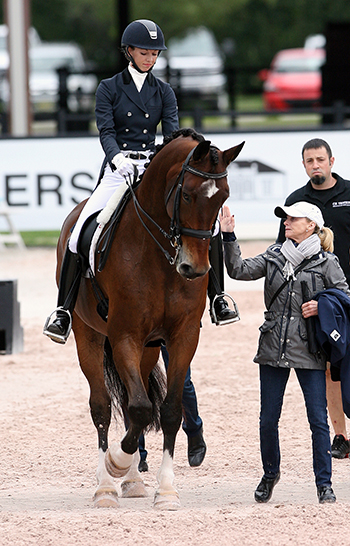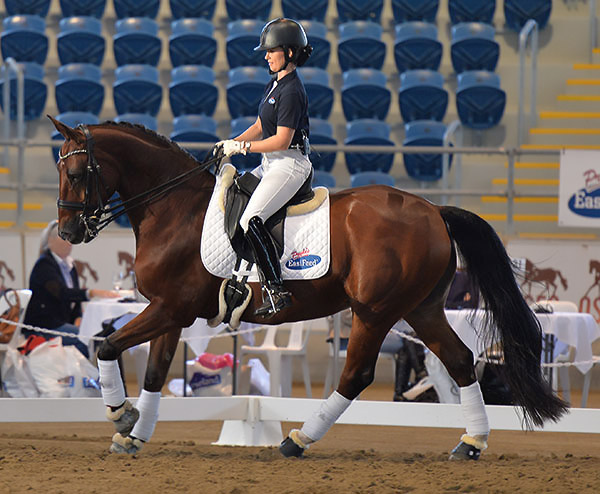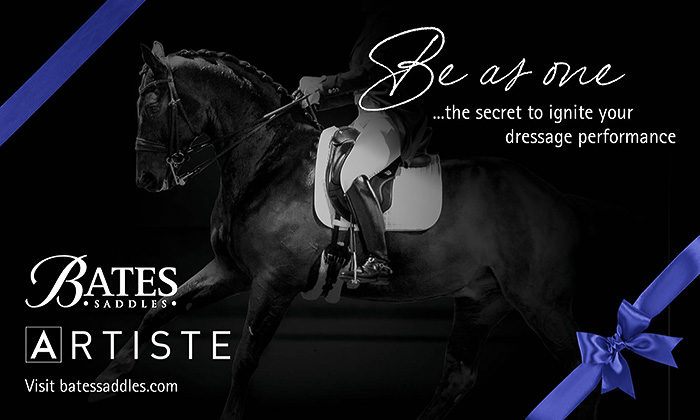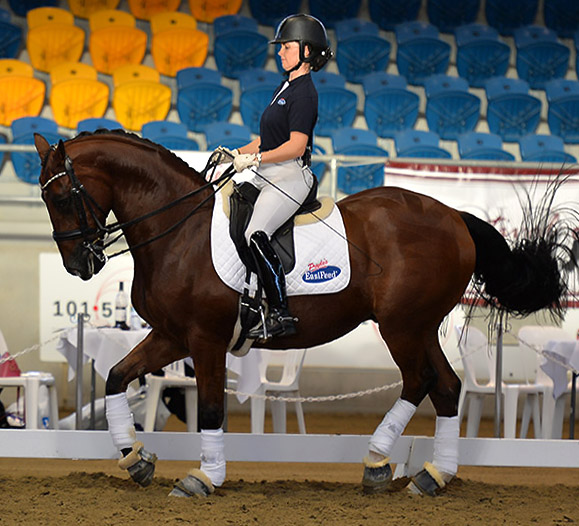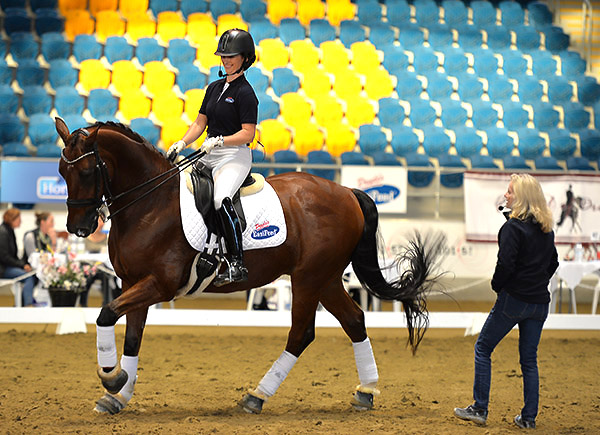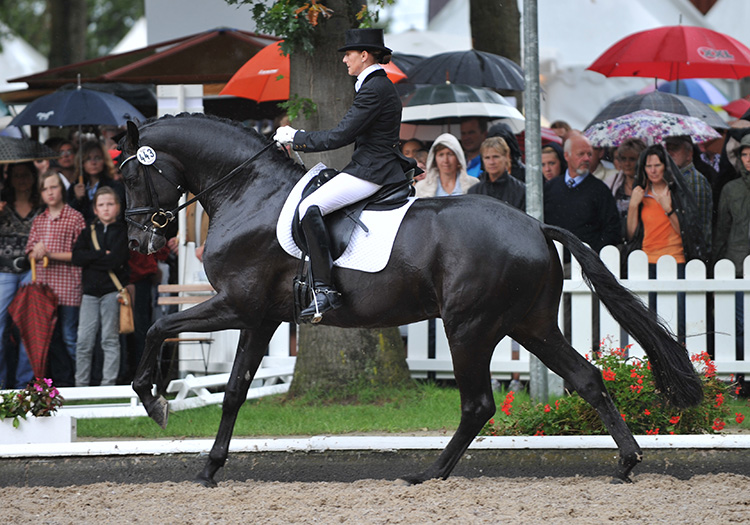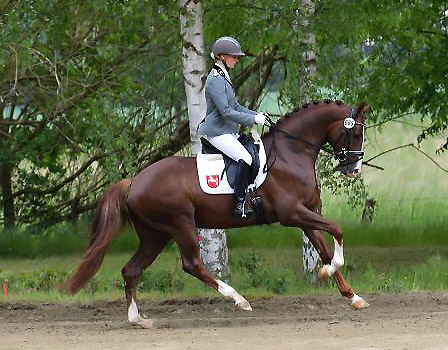One thing about Debbie McDonald is that she is not a horse snob, which is lucky because one of the megastars of the emerging Debbie coached US Dressage Team, was the most unlikely candidate for dressage success, Laura Graves’ Verdades. And while Verdades’ sire Florett As was a Grand Prix dressage competitor, his dam was literally bred to pull a cart – she is rich in the blood that has made the Dutch carriage horses great. Verdades shows his heritage in his conformation, he’s high behind, but no one had told Laura Graves that her horse couldn’t wouldn’t make it, and with Debbie’s help the pair became megastars on the international dressage stage.
Laura and Verdades, with Debbie’s help they became international mega stars
It was a bit the same with Shannan Goodwin and her horse Aristede. Her bay gelding is by Aachimedes, but unfortunately for Shannan, his hind end looks – and works – a lot like his dam sire, Lander, an old-fashioned, out-behind, Holsteiner…
Debbie was really impressed that Shannan had been able to turn her duckling into a Grand Prix Swan. “Look at him – really?? But he is a Grand Prix horse, someone has taken the time and preserved the brain, and he is a happy horse.”
And what’s more Shannan had done it all the way, from breaking in to Grand Prix!
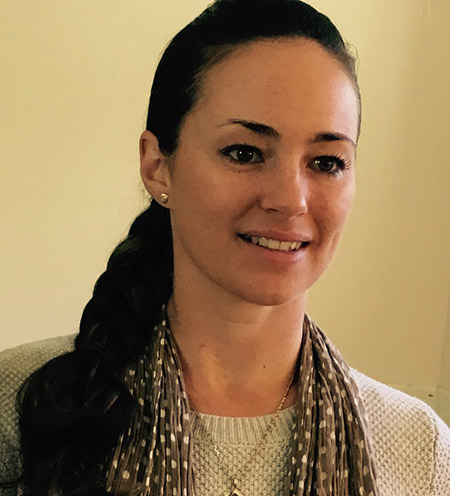
“He’s my first dressage horse. I bought him as a breaker and I’ve brought him through since them.”
That all sounds quite simple, but not many people start out on their first dressage horse and end up taking it to Grand Prix…
“No, it’s his work ethic and trainability. He struggles with his hindlegs, they are a bit out the back, which is how he is built, he is built croup high. He just found a way to engage as best he could and soared through to the higher levels, it was quite effortless.”
Debbie was quite moved that you had taken a horse with less than perfect conformation, and still got to Grand Prix…
“Yeah, it’s pretty cool.”
How did you find Debbie’s coaching?
“I loved working with a trainer who takes what you’ve got and works on it, then you can replicate that at home. Sometimes trainers want to change so much of what you are doing that you can’t replicate it, and you get a bit lost. Debbie was so clear about little exercises that just brought his shoulder up and allowed him to engage. That’s the 5% more that he’ll work on for two months and get stronger, then the next step is to get the other 5%. That’s my style of training to build those increments as he gets stronger and he gives me what he can.”
I thought one of the things about Debbie was not only how accurate and sharp she was, but how warm…
“Wasn’t she lovely? Just the most encouraging woman. I really thrive on that positive motivation. If someone has that kind heart to your horse, it is so motivating.”
Story continues below the advertisement
It came as no surprise that Debbie’s message was simple – “the reaction of the horse to the leg is everything. The ability to collect a horse from the seat and leg, not the hand, is quite an art. This horse has a nice piaffe, the passage is harder for him but I think we can work on that, but first we’ll do a bit of canter work – the zig zag.”
“Get a little more collection, get him a little more uphill, and get him straight for a beautiful change…”
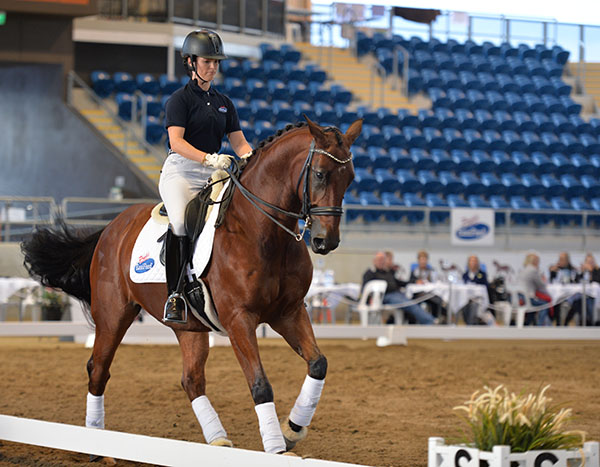
And the twos?
“Sit straight, keep the bounce, look at the letter between his ears…”
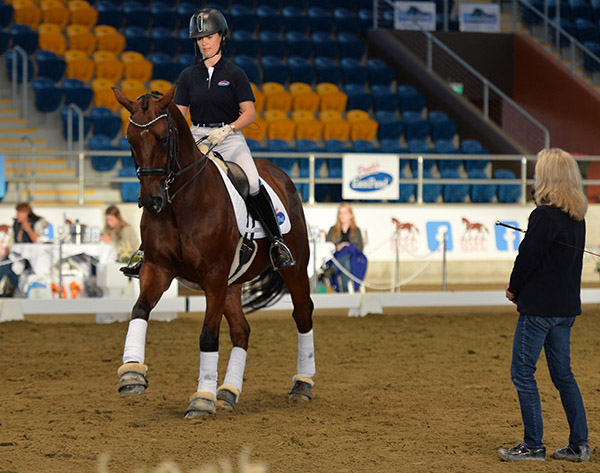
Now Shannan is playing with the ones on the long side. “Good changes, your changes get better when you don’t have to move your leg so far.”
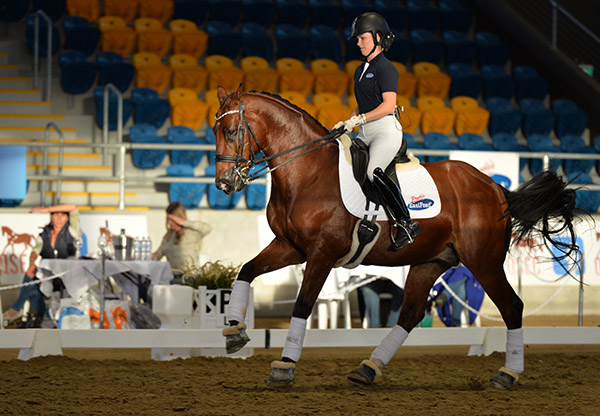
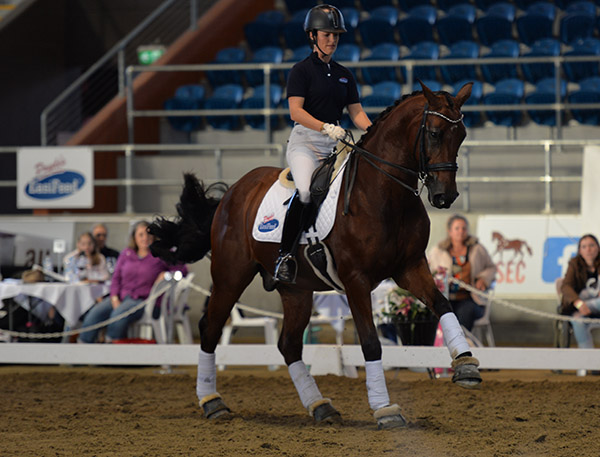
Let’s try the piaffe and passage:
“Establish a really good trot, first I want him to shorten in a good forward way, with the balance more uphill. If he gets too hangy then a couple of steps of medium. Always think forward to passage, think leg before hand. Weight back a little more, let him think creep – good job Sweetie.”
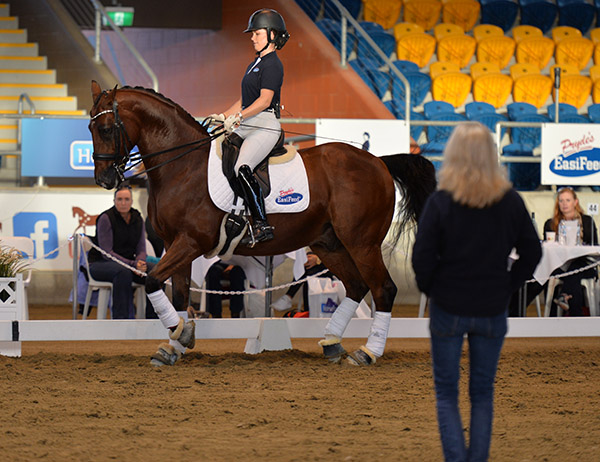
“It has to be clear in the horse’s head that passage is just a trot, just a trot, just a trot. If they start to think it is a trick, that’s when they worry.”
“In the piaffe, make a little pirouette, that makes the horse think about going somewhere. Help him with the whip, especially coming into the piaffe, don’t wait until it gets slow, help the first step.”
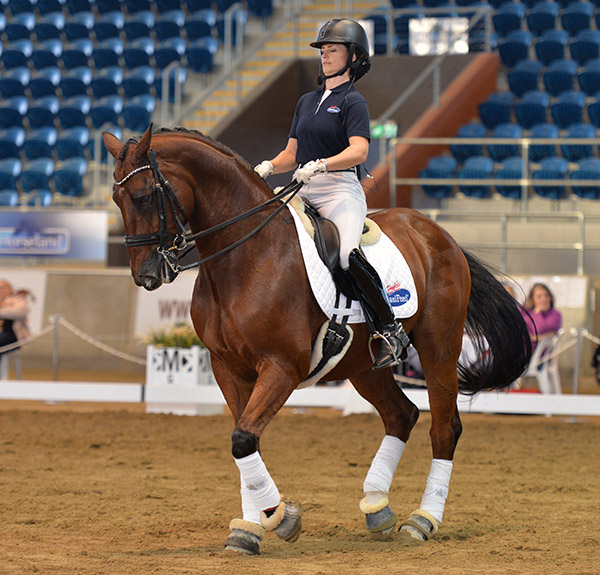
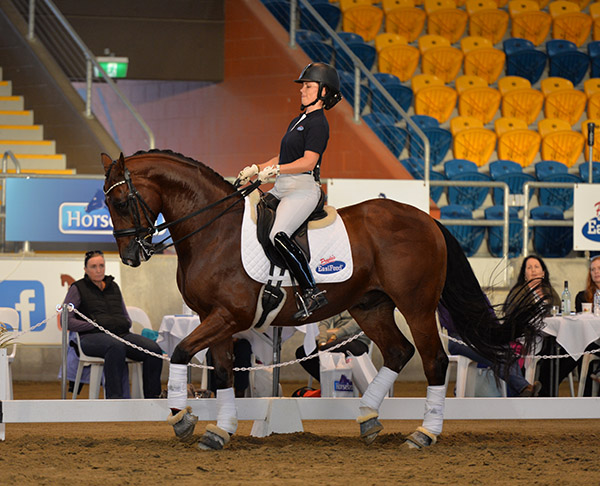
“Oh yeah, half passes.” And forget that Debbie is on her fourth training session in a very long and demanding day, she says it with real enthusiasm.
“Half pass to the wall, now shoulder fore, that’s good for him. Take what you get with the movement and make it the best you can.”
“GOOD GIRL! Praise the heck out of him, you have to love and appreciate a horse like this.”
Breeding a dressage star this season? Go to www.ihb.com.au and see the amazing range. Stallions like Fürstenball
Or new this season, Don Olympus


